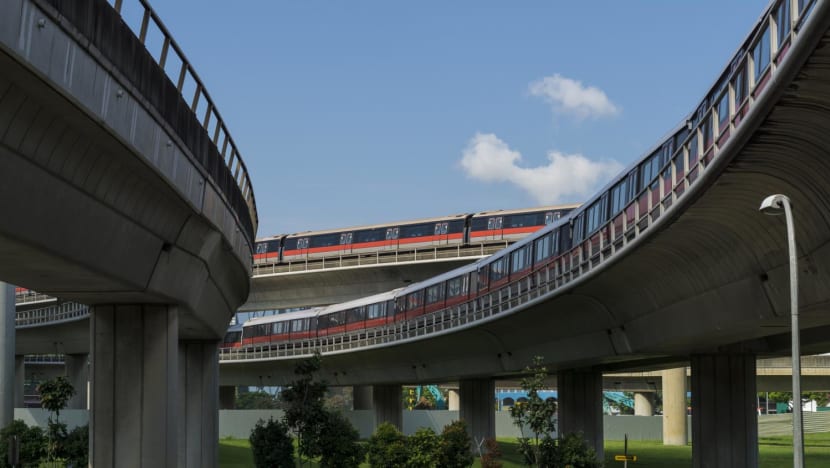Business
Public Transport Fares in Singapore to Rise from December 27

Adults using public transport in Singapore will face an increase in fares starting from December 27, 2023. According to the Public Transport Council (PTC), card fares for buses and trains will rise by 9 to 10 cents per journey. This adjustment is part of an overall fare increase of 5 percent, which is notably lower than last year’s 6 percent hike.
The fare changes reflect the rising operational costs and the need to ensure the sustainability of the public transport system. For concession cardholders travelling beyond 3.2 kilometers, fares will increase by 3 to 4 cents, again less than last year’s increase of 4 cents. The PTC highlighted that over a third of journeys, approximately 450,000, are 3.2 kilometers or shorter, often for commuting to schools or workplaces.
In addition to the fare increases for card payments, cash fares will also see a rise: 5 cents for students, 10 cents for seniors and individuals with disabilities, and 20 cents for adults and other commuters. This adjustment is attributed to the higher costs associated with handling cash transactions, which make up less than 1 percent of all public transport payments.
Reasons Behind the Fare Hike
During a press conference, PTC chairperson Janet Ang addressed the complexities surrounding the fare adjustments. She emphasized the council’s commitment to keeping public transport accessible for over seven million daily riders while balancing factors such as operational costs, worker wages, and resources needed for network expansion and accessibility improvements.
“The council recognises that any fare adjustments can be challenging for commuters in an economic climate of uncertainty,” said Ang. She noted that the council has refrained from implementing the maximum allowable fare increase in recent years, aiming to alleviate financial pressure on commuters.
To adapt to changing economic conditions, the PTC announced a new method for calculating fare adjustments. Instead of evaluating economic data from January to December of the previous year, the council will now consider data spanning from July of the previous year to June of the current year. This change aims to reduce the lag between operational cost changes and fare adjustments by six months.
Additional Changes and Financial Impact
For the first time, the surcharge for express bus services will also increase, reflecting the higher operational costs of these faster routes. The fare difference for express services will increase by S$0.40 for adults and S$0.20 for concession groups when paying with cards. For cash payments, the fare will rise by S$0.60. This is the first adjustment to express service fares since 2010.
Despite the fare increases, the PTC will reduce the prices of monthly passes for both adults and seniors by up to 5 percent. This reduction will benefit approximately 155,000 commuters, including those holding Workfare Transport Concession cards and individuals with disabilities.
Low-income households will continue to receive S$60 in Public Transport Vouchers, unchanged from the previous year. Additionally, public transport operators, including SBS Transit Rail and SMRT Trains, will contribute 20 percent of their expected revenue increase—totaling S$10.65 million—to the Public Transport Fund, which supports these vouchers.
The fare adjustment also addresses the issue of deferred fare increases. The council’s decision to implement a 5 percent fare hike reduces the deferred quantum to 9.4 percent, down from 12.9 percent. The PTC employs a flexible fare mechanism to manage the financial impact on commuters while ensuring operators are compensated for their operational cost changes over time.
While the current fare formula allows for a maximum increase of 14.4 percent, the PTC opted for the 5 percent increase to consider the rising cost of living and economic conditions. If the full increase had been implemented, it would have resulted in a flat 21 cent fare rise for all commuters.
The government has agreed to provide an additional subsidy of over S$200 million next year to help mitigate the fare increase while addressing the higher costs of public transport provision. This subsidy complements the annual operating subsidies of S$2 billion and nearly S$1 billion allocated over eight years for the Bus Connectivity Enhancement Programme.
In determining fare adjustments, the PTC considers various economic indicators, including inflation, wages, energy prices, and operator productivity. This year, the PTC noted that both rail operators requested the maximum fare adjustment of 14.4 percent due to cost pressures from a competitive labor market and increasing maintenance costs associated with aging infrastructure.
The overall fare adjustment of 5 percent is projected to generate an additional S$115.5 million in annual fare revenue, with SBS Transit Rail expecting an increase of S$17.6 million and SMRT Trains anticipating S$35.6 million. Revenue from bus services and the Thomson-East Coast Line will rise by S$62.3 million.
This fare adjustment reflects both the challenges faced by transport operators and the need to balance financial sustainability with the affordability of public transport for commuters across Singapore.
-

 Business5 months ago
Business5 months agoKenvue Dismisses CEO Thibaut Mongon as Strategic Review Advances
-

 Lifestyle4 months ago
Lifestyle4 months agoHumanism Camp Engages 250 Youths in Summer Fest 2025
-

 Sports4 months ago
Sports4 months agoDe Minaur Triumphs at Washington Open After Thrilling Comeback
-

 Sports5 months ago
Sports5 months agoTupou and Daugunu Join First Nations Squad for Lions Clash
-

 Top Stories5 months ago
Top Stories5 months agoColombian Senator Miguel Uribe Shows Signs of Recovery After Attack
-

 World5 months ago
World5 months agoASEAN Gears Up for Historic Joint Meeting of Foreign and Economic Ministers
-

 Health4 months ago
Health4 months agoNew Study Challenges Assumptions About Aging and Inflammation
-

 Business5 months ago
Business5 months agoOil Prices Surge Following New EU Sanctions on Russia
-

 Entertainment4 months ago
Entertainment4 months agoDetaşe-Sabah Violin Ensemble Captivates at Gabala Music Festival
-

 Entertainment4 months ago
Entertainment4 months agoBaku Metro Extends Hours for Justin Timberlake Concert
-

 Top Stories5 months ago
Top Stories5 months agoRethinking Singapore’s F&B Regulations Amid Business Closures
-

 Business5 months ago
Business5 months agoU.S. House Approves Stablecoin Bill, Sends to Trump for Signature









